Shoulder strength
shoulder strength fitness programmes
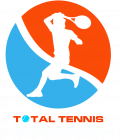
Strengthening the shoulder for tennis
The purpose of any tennis specific fitness plan is twofold: to improve performance on the court and to prevent injury. The shoulder plays a pivotal role in tennis and is one of the most commonly injured parts of the body for our sport. Any complete conditioning plan must include exercises to strengthen and improve the function of this multifaceted and overall, pretty amazing part of the body.
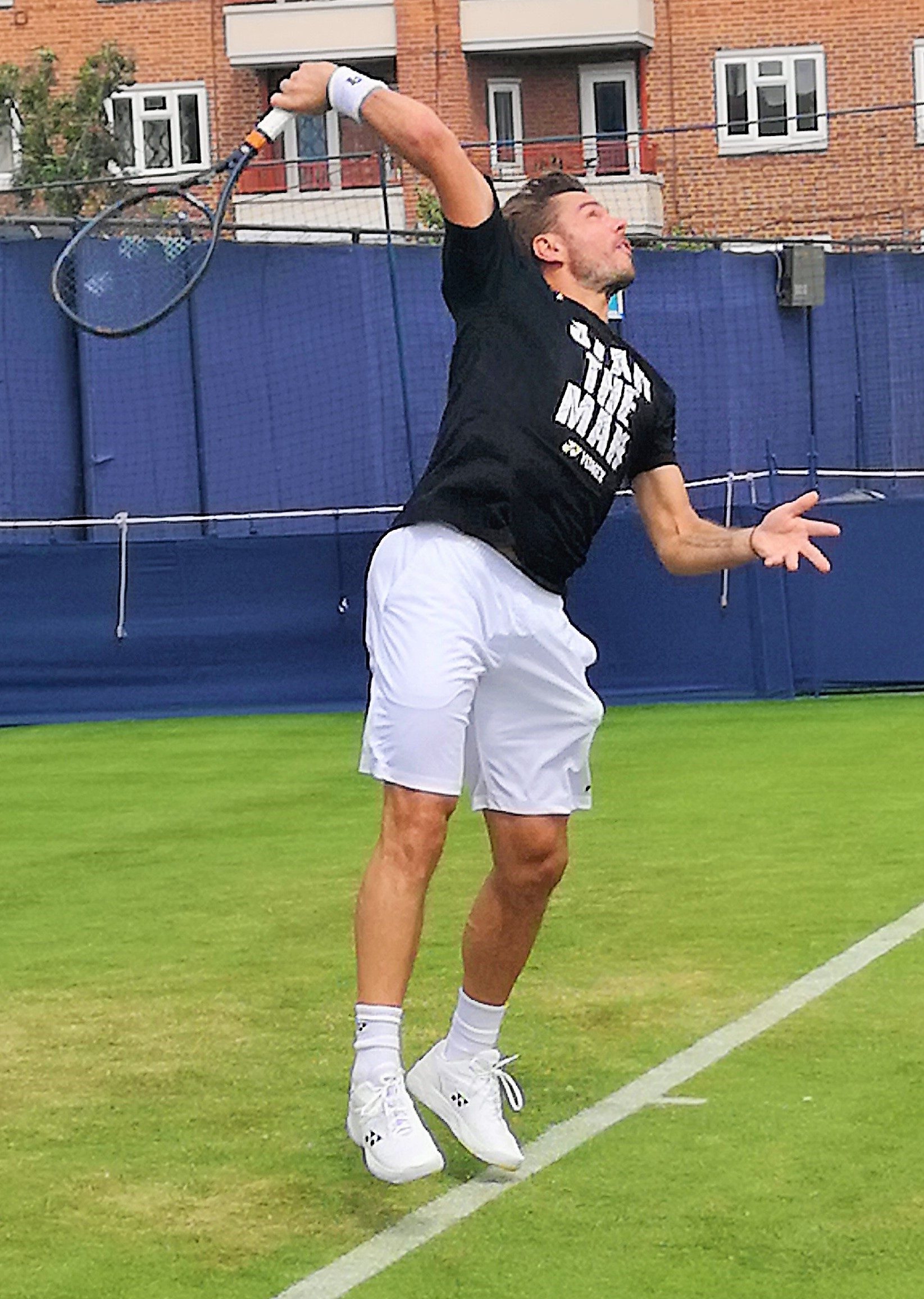
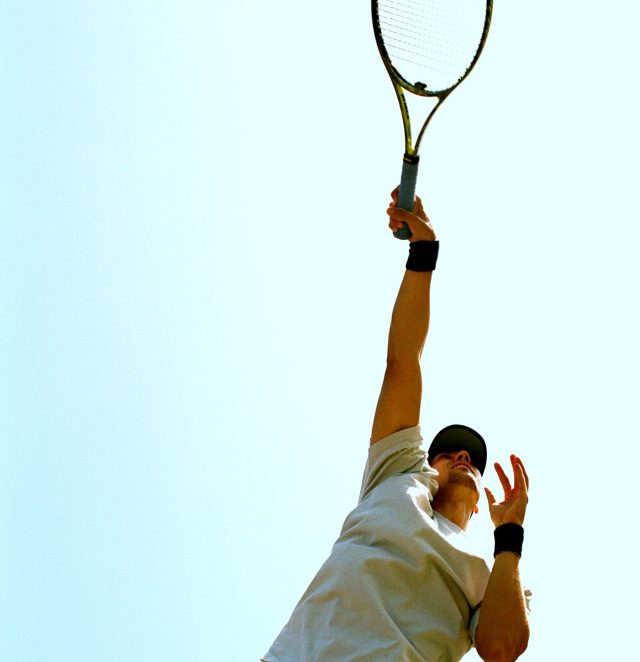
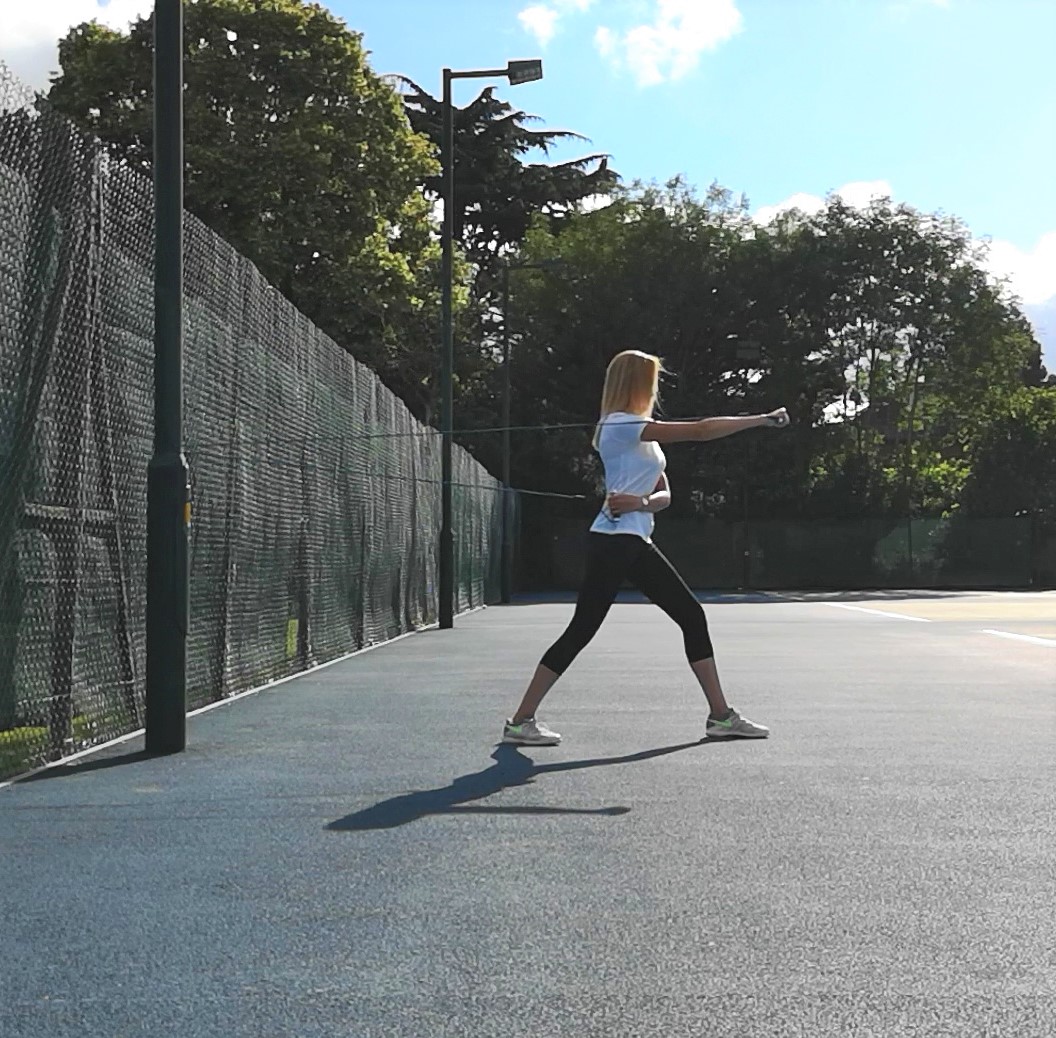
We offer beginner and intermediate 6 week shoulder strength programmes
or combine the two for our full 12 week complete programme
Shoulder function
As a ball and socket joint, the shoulder has the largest range of motion of any joint in the human body. The shoulder is responsible for extension, flexion, abduction, adduction, external and internal rotation, and circumduction of the arms. We can also elevate, depress, retract and protract. Like I said, it’s amazing!
There isn’t a single shot on the tennis court that doesn’t require shoulder function – and for it to function well. Because of its wide range of movement and mobility it’s prone to overuse injuries and any instability around the ball and socket can lead to problems. The range of motion (ROM), load and velocities it’s subjected to make it one of the most vulnerable joints for tennis players.
Shoulder anatomy
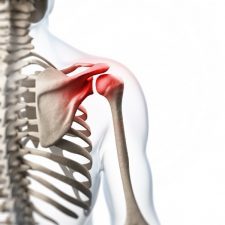
Bones
Three bones make up the structure of the shoulder joints
• Humerus (the bone of the upper arm)
• Scapula (shoulder blade)
• Clavicle (collarbone)
Joints
Demonstrating its complexity, the shoulder consists of four joints. • The glenohumeral joint is the ball and socket; the ball being at the top of the humerus and the socket, a depression within the scapula. • The acromioclavicular joint is a flat gliding joint consisting of the clavicle and the scapula. • The sternoclavicular joint connects the clavicle to the sternum (breastbone). It is the only point where the arm connects to the axial skeleton. • The scapulothoracic joint is an articulation between the scapula and posterior rib cage.
By working together these joints are greater than the sum of their parts, providing additional movement and flexibility in the shoulder. This increase in the range of movement comes at the price of stability. In strengthening the joint to improve performance and prevent injury we need to work on a variety of muscles, movements and flexibility.
Muscles
The rotator cuff muscles are relatively small but work together to maintain the stability and position of the humeral head, in short, preventing frequent dislocation. They consist of the subscapularis, (internal rotator), supraspinatus (abductor) infraspinatus and teres minor (external rotators). The larger deltoids, biceps brachii, teres major, serratus anterior, latissimus dorsi and pectoralis major work together with the rotator cuff to provide dynamic stability.
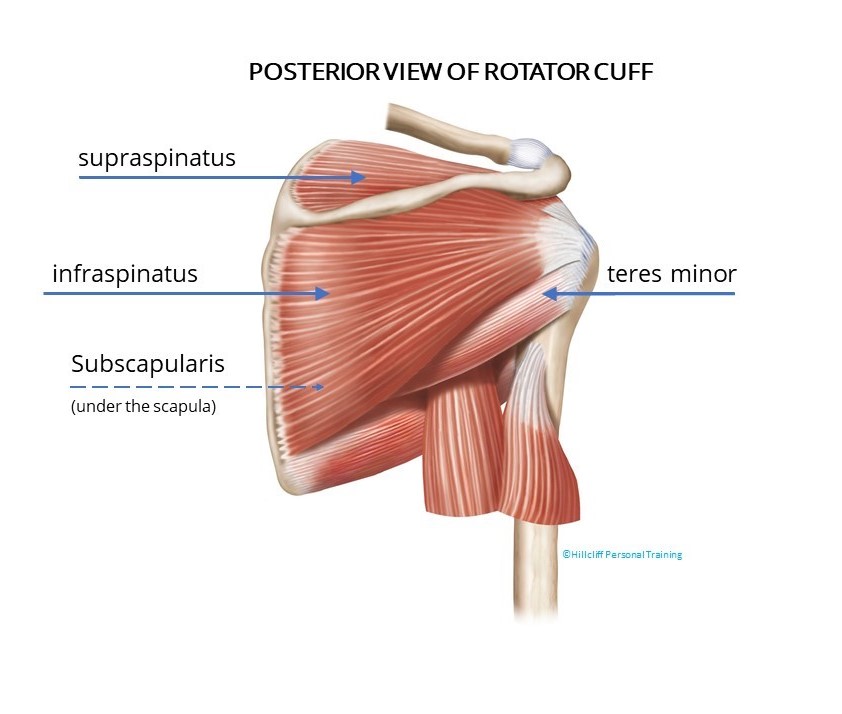
Preventing injury
The repetitive and unilateral nature of our sport requires a strength and conditioning programme to manage the potentially high risk of injury. Rotator cuff injuries are common in tennis players including muscle tears, tendon damage, impingement and bursitis predominately caused by poor technique, lack of strength and overuse.
Being dominant in one arm leads to musculoskeletal adaptive strength changes that need to be addressed.
Overhead shots are an unnatural movement in daily life and the repetitive nature of tennis eventually results in muscular imbalances as the internal rotators develop disproportionate strength to the external rotators.
When you love a sport the last thing you want to happen is to be side-lined by injury. It’s vital that we strengthen and rebalance the muscles through a programme of muscular endurance, strength and flexibility in both the rotator cuff muscles, deltoids and upper back – exactly as found in the Total Tennis Fitness Shoulder Strength Programme.
Improving performance
Increasing shoulder strength can have a hugely positive impact on court. Of course, with every shot we are utilising the power, force and torque generated along the kinetic chain from the ground up and no one joint or muscle is ever used in isolation, but here we will focus on the role of the shoulder. During a match our muscles will either produce force, deceleration or act as stabilisers. Every shot will place a different demand on the musculature of the shoulder. Optimal scapular function and strong stabilisers are vital.
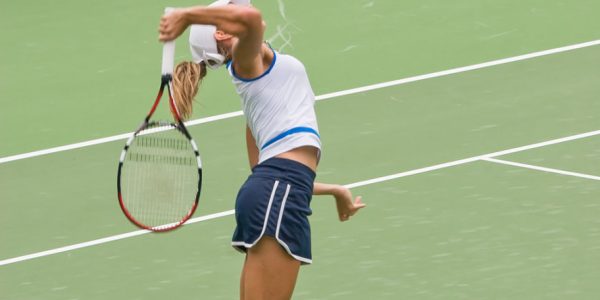
The serve
The serve places the highest demand on the shoulder. The forces generated during the overhead action and the explosive internal rotation produce a huge amount of stress on the integrity of the shoulder structure. There are 3 basic phases to the service motion:Preparation – storing the energy; the loading phase
The supraspinatus, infraspinatus, subscapularis, serratus anterior and bicep brachii are all activated. Here the shoulder is in maximal external rotation. Both anterior and posterior rotator cuff strength is required to increase stabilisation.
Acceleration – releasing the energy
Beginning the action with the racquet head down and behind the back (cocking the racquet) increases the distance between the racquet head and ball. The greater the trajectory, the more speed at which you’ll make impact with the ball and therefore generate more power. This requires an optimal range of flexibility in the shoulder (that must be accompanied by stability).
LACK OF FLEXIBILITY
Any restrictions due to tightness or lack of flexibility limit the potential for maximal speed and power. The downward motion of the service recruits the pectoralis major, subscapularis, serratus anterior and latissimus dorsi. We are utilising the chest, back and shoulder. The upper arm is internally rotating. This stage ends with the contact point.
Follow-through - deceleration
Following contact we recruit the posterior rotator cuff muscles responsible for external rotation to eccentrically load (lengthening under tension) in order to dissipate the explosive power that accelerated the speed of the arm through the acceleration and contact stage. The faster the serve, the stronger these need to be to slow the arm down.
Groundstrokes
Groundstrokes are performed with a horizontal movement of the arm. On the forehand we abduct the arm and externally rotate in the backswing. The same movements are used in the backhand follow through.
Likewise, the backhand preparation and forehand follow through require abduction and internal rotation.
External rotators are generally weaker than their internal counterparts due to the movements through multiple planes of motion required of the shoulder when playing tennis and we need to address this in the training programme by creating the optimal balance.
Without the balance of the antagonist muscle the ROM eventually reduces leading to loss of performance, power and speed generation.
